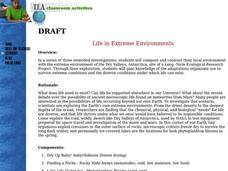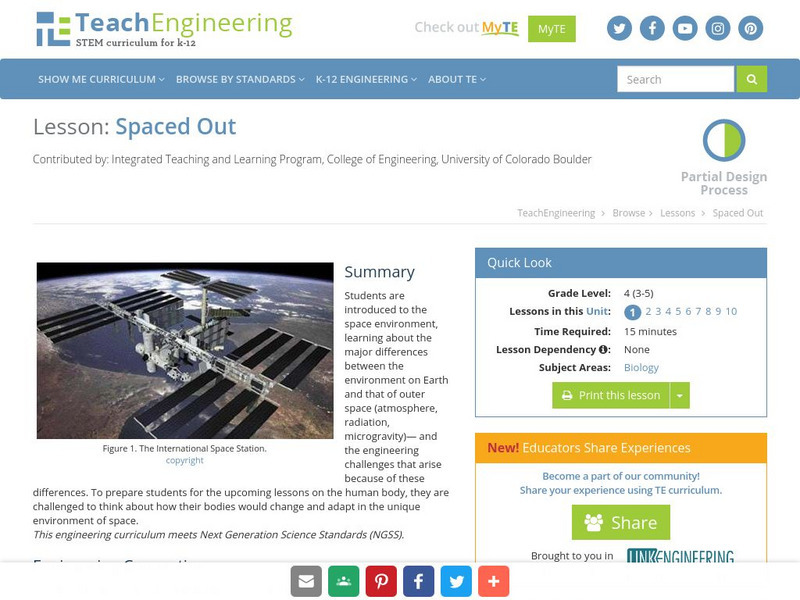Curated OER
Where in the World? The Basics of Latitude and Longitude
Students are introduced to the concepts of latitude and longitude. In groups, they identify the Earth's magnetic field and the disadvantages of using compasses for navigation. They identify the major lines of latitude and longitude on a...
PHET
CME Plotting
Young scientists build on their previous knowledge and apply it to coronal mass ejections. By plotting the path of two different coronal mass ejections, they develop an understanding of why most don't collide with Earth.
Curated OER
How Does the Moon Affect Tidal Range?
Eighth graders study the phases of the moon. In this tides lesson students use the Internet to retrieve information.
Curated OER
Objects in the Solar System
Eighth graders define a planet by the orbit around the sun, have a large enough gravitational force to hold a sphere shape and needs to clear the neighboorhood of it own orbital zone. They describe comets, meteoroids, meteor, meteorites...
Curated OER
Celebrate The Four Seasons
Students investigate cause and effect and compare and contrast how recurring cycles are evident in multiple aspects of their education. They answer questions in the chosen field. Students model each aspect by interpreting, perceiving and...
Curated OER
Life in Extreme Environments
Learners compare and contrast local environments with the extreme environment of the Dry Valleys, Antarctica. Students explore and gain knowledge of the adaptations organisms use to survive extreme conditions and the diverse conditions...
Curated OER
Biospheres
Second graders create models, practice inquiry skills, work with fellow students in teams, and reinforce concepts discussed in class all by using the theme of BIOSPHERES.
Curated OER
Balloon Staging
Students discover how rockets can reach a higher altitude by using staging. They use balloons to demonstrate this concept and then practice with rockets. They discuss the results to end the lesson.
Curated OER
Astrophysics Science Project Integrating Research and Education
Learners determine if the particles are coming from above, below, or from one side or the other by using a circular array of scintillators
TeachEngineering
Teach Engineering: Destination Outer Space
Students acquire a basic understanding of the science and engineering of space travel as well as a brief history of space exploration. They learn about the scientists and engineers who made space travel possible and briefly examine some...
TeachEngineering
Teach Engineering: Spaced Out
This lesson introduces students to the space environment. It covers the major differences between the environment on Earth and that of outer space and the engineering challenges that arise because of these discrepancies. In order to...
TeachEngineering
Teach Engineering: The Outer Planets
Young scholars explore the outermost planets of our solar system: Saturn, Uranus and Neptune. They also learn about characteristics of Pluto and its interactions with Neptune. Students learn a little about the history of space travel as...











